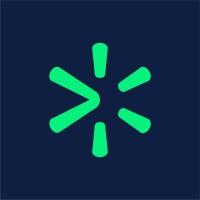Company Cyber Security Posture
NANA
NA Company Details
NA
NA
NA
NA
NA
NA
Scan still pending
NA
NA
Between 200 and 800
This score is AI-generated and less favored by cyber insurers, who prefer the TPRM score.
 NA Global Score
NA Global Score.png)

Company Scoring based on AI Models
| Model Name | Date | Description | Current Score Difference | Score |
|---|---|---|---|---|
| AVERAGE-Industry | 03-12-2025 | This score represents the average cybersecurity rating of companies already scanned within the same industry. It provides a benchmark to compare an individual company's security posture against its industry peers. | N/A | Between 200 and 800 |
Company Cyber Security News & History
| Entity | Type | Severity | Impact | Seen | Url ID | Details | View |
|---|
Company Subsidiaries

NA
Access Data Using Our API

Get company history
.png)
NA Cyber Security News
Major Cyber Attacks Targeting the Finance Industry
This blog post will explore some of the most significant cybersecurity events affecting the financial sector, with a focus on incidents from 2023 through early ...

NA Similar Companies

Grab
Grab is Southeast Asia’s leading superapp, offering a suite of services consisting of deliveries, mobility, financial services, enterprise and others. Grabbers come from all over the world, and we are united by a common mission: to drive Southeast Asia forward by creating economic empowerment for ev

iFood
O iFood é uma empresa brasileira de tecnologia, que aproxima clientes, restaurantes e entregadores de forma simples e prática. O iFood tem o propósito de alimentar o futuro do Brasil e do mundo, transformando a sociedade por meio da educação e da tecnologia, da segurança alimentar, da inclusão e co

Alibaba.com
The first business of Alibaba Group, Alibaba.com (www.alibaba.com) is the leading platform for global wholesale trade serving millions of buyers and suppliers around the world. Through Alibaba.com, small businesses can sell their products to companies in other countries. Sellers on Alibaba.com are t

Amazon
Amazon is guided by four principles: customer obsession rather than competitor focus, passion for invention, commitment to operational excellence, and long-term thinking. We are driven by the excitement of building technologies, inventing products, and providing services that change lives. We embrac

Cox Automotive Inc.
Cox Automotive is the world’s largest automotive services and technology provider. Fueled by the largest breadth of first-party data fed by 2.3 billion online interactions a year, Cox Automotive tailors leading solutions for car shoppers, auto manufacturers, dealers, lenders and fleets. The company

Walmart Global Tech
Walmart has a long history of transforming retail and using technology to deliver innovations that improve how the world shops and empower our 2.1 million associates. It began with Sam Walton and continues today with Global Tech associates working together to power Walmart and lead the next retail d

Frequently Asked Questions
Explore insights on cybersecurity incidents, risk posture, and Rankiteo's assessments.
NA CyberSecurity History Information
How many cyber incidents has NA faced?
Total Incidents: According to Rankiteo, NA has faced 0 incidents in the past.
What types of cybersecurity incidents have occurred at NA?
Incident Types: The types of cybersecurity incidents that have occurred include .
Additional Questions
What Do We Measure?
















Every week, Rankiteo analyzes billions of signals to give organizations a sharper, faster view of emerging risks. With deeper, more actionable intelligence at their fingertips, security teams can outpace threat actors, respond instantly to Zero-Day attacks, and dramatically shrink their risk exposure window.
These are some of the factors we use to calculate the overall score:
Identify exposed access points, detect misconfigured SSL certificates, and uncover vulnerabilities across the network infrastructure.
Gain visibility into the software components used within an organization to detect vulnerabilities, manage risk, and ensure supply chain security.
Monitor and manage all IT assets and their configurations to ensure accurate, real-time visibility across the company's technology environment.
Leverage real-time insights on active threats, malware campaigns, and emerging vulnerabilities to proactively defend against evolving cyberattacks.




